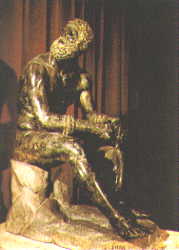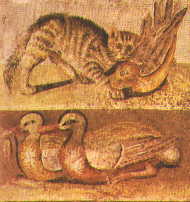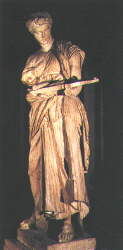가톨릭 이미지 가톨릭 관련 이미지 자료실 입니다.
|
[로마]로마 국립 박물관 |
|---|
|
001. 로마 국립 박물관 National Museum of Rome
The National Museum of Rome, which possesses one of the world’s most important archaeological collections, is housed in three different facilities: the Baths of Diocletian, which include the Octagonal Hall, the Palazzo Massimo, and the Palazzo Altemps.The complex restructuring and renovation effort is partially completed, but work is still under way. For this reason, only a portion of the Museum’s exhibitions can currently be visited.
로마 국립 박물관은 전세계에서 가장 중요한 건축학적 전시물들을 소장하고 있습니다. 소장품들은 세 건물에 나뉘어 전시되고 있지요. 바로 디오클레티안 목욕탕들인데요, 여기에는 8각형 모양의 강당(옥타고날 홀)과 마시모 궁(팔라쪼 마시모), 알템프스 궁(팔라쪼 알템프스)가 포함되어 있습니다. 로마 국립 박물관을 보수하고 개축하는 작업이 부분적으로만 완료된 상태입니다. 여전히 그러한 작업이 진행 중이죠. 그 때문에, 현재는 박물관 일부분 관람만 허용되고 있답니다.
The historic headquarters of the Museum is the Baths complex built by Diocletian between the last years of the third century A.D. (the dedicatory inscription dated 306 A.D. is conserved in a fragmentary state in the Museum).
로마 국립 박물관의 역사적으로 유서깊은 본부라 할 수 있는 곳이 디오클레티안이 지은 목욕탕 건물들이랍니다. 그 건축물들은 기원후 3세기 말에 지어졌지요. 박물관 전시물중에는 기원후 306년이라 세겨진 건축물 조각을 볼 수 있답니다.
The building of the Baths, the largest in the ancient world, included many rooms besides the traditional calidarium, tepidarium and frigidarium-which were designed to hold 3,000 people at the same time. Ther was a natatio or frigidarium for swimmers (large open air swimming pool) and various other rooms, meeting rooms, libraries, nympheums, dressing rooms, concert rooms and rooms for physical exercises etc.
목욕탕들의 건물은 고대 세계에서 제일 큰 규모인데요, 여기에는 많은 별실들이 딸려 있답니다. 전통적인 열탕과 온욕탕, 냉탕은 동시에 3,000명을 수용할 수 있도록 디자인되었습니다. 또한 커다란 야외 수영장과 다양한 별실들과 회합실, 도서관, 의상실, 님페움, 콘서트 룸, 신체 단련실들도 있었지요. 우리, 로마 국립 박물관의 소장품 몇가지를 감상해 볼까요?
019. 쉬고 있는 권투선수 Boxer at Rest
020. 칠면조를 공격하고 있는 고양이의 모자이크 그림
Mosaic of cat attacking a turkey
021.안찌오로부터 온 어린 소녀 Young girl from Anzio
002. Baths of Diocletian
Following the transfer of the materials to the Palazzo Massimo, massive restoration work was begun on the Baths complex (at present the rooms are open to the public on a partial, irregular basis). Rooms I-IX: exhibition of funerary materials (sarcophagi, etc.) and of artifact from the Baths themselves, or from other major public buildings, such as the decorations on the Temple of Aurelian. Rooms X-XII: temporary exhibits. The so-called "Masterpiece Roooms" have been set aside for the Epigraphical Department, which consists of almost 10,000 inscriptions. Plans also call for the first floor of the "Michelangelo" cloister to house a section on the protohistory of the City of Rome.
003. Octagonal Hall
The Octagonal Hall stands at the southwest corner of the central complex of the Baths of Diocletian, in which it may have served as a passage area. The most important of the works on exhibit are the Lyceum Apollo and the Aphrodite of Cyrene. The first, and IInd century A.D. copy of the original by Praxiteles, was found near the Baths of Trajan, by the Church of St. Peter in Chains, while the Aphrodite comes from Cyrene, in Libya, and represents a splendid copy from the middle of the IInd cent. A.D. of a late-Hellenistic original. All of the sculptures on display come from bath complexes, including the Anadyomene Aphrodite, the Heracles, the Lance-Bearer and the Cnidian Aphrodite.
004. Palazzo Massimo
Formerly the site of the preparatory school "Massimiliano Massimo", the building was constructed in 1883-87 by Camillo Pistrucci in imitation of the noble residences of the early Roman baroque period. Exhibited in the central hall are works that illustrate the political and ideological program of Augustus, including the statue of Augustus dressed as the Pontifex Maximus from the Via Labicana and the pictorial frieze of the noble sepulchre from the Esquiline hill.
The first floor offers iconographic works from the Age of the Flavians to the late Empire, with examples of the decorations used on imperial villas and aristocratic residences.In the section featuring the physical activities related to gymnasiums and public baths, visitors can admire two copies of the Discus Thrower by Myron. The following section holds important sarcophagi, including an oval-shaped work from Acilia. The second floor offers in-depth documentation on mosaic and pictorial decorations from the Ist cent. B.C. to the late Imperial Age. On the basement level, a rich coin collection is displayed, including extremely rare pieces, such as the medaillon of Theodoric, the silver piasters of the Pontifical State with views of Rome snd the four ducats of Pope Paul II. The exhibition is completed by a section on luxury in the Roman world, featuring a rich selection of jems and jewels.
005. Palazzo Altemps
The Palazzo was commissioned by Girolamo Riario (1443-1488). In 1568 it passed into the hands of the Altemps family, which had it enlarged and built the courtyard. This feature of the building, without a doubt its most handsome, is credited to Martino Longhi the elder. Restoration work has been under way since 1984, and steps are being taken to arrange the exhibit. Apart from the Ludovisi Throne, which is kept in the Palazzo Massimo, the collection boasts works of great artistic value, such as the Gaul who kills himself together with his wife, a copy of an originalfrom Pergamon; the Ludovisi Ares, a copy traceable to Lysippus; the Castelporziano mosaic (IInd cent.), one of the most important known Roman mosaics; the Ludovisi Hermes, copy of a bronze original by the school of Myron; the Aphrodite of Cnidus, a copy of the reknowned Aphrodite by Praxiteles, and a colossal sarcophagus depicting a battle between Romans and Barbarians.
00310naz.jpg 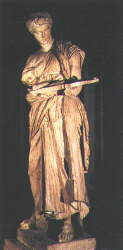 00211naz.jpg 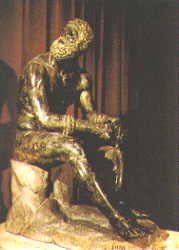 00112naz.jpg  0 1,747 0 |




 게시판 운영원칙
게시판 운영원칙 Help Desk
Help Desk

